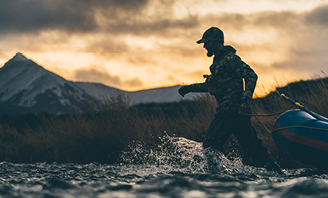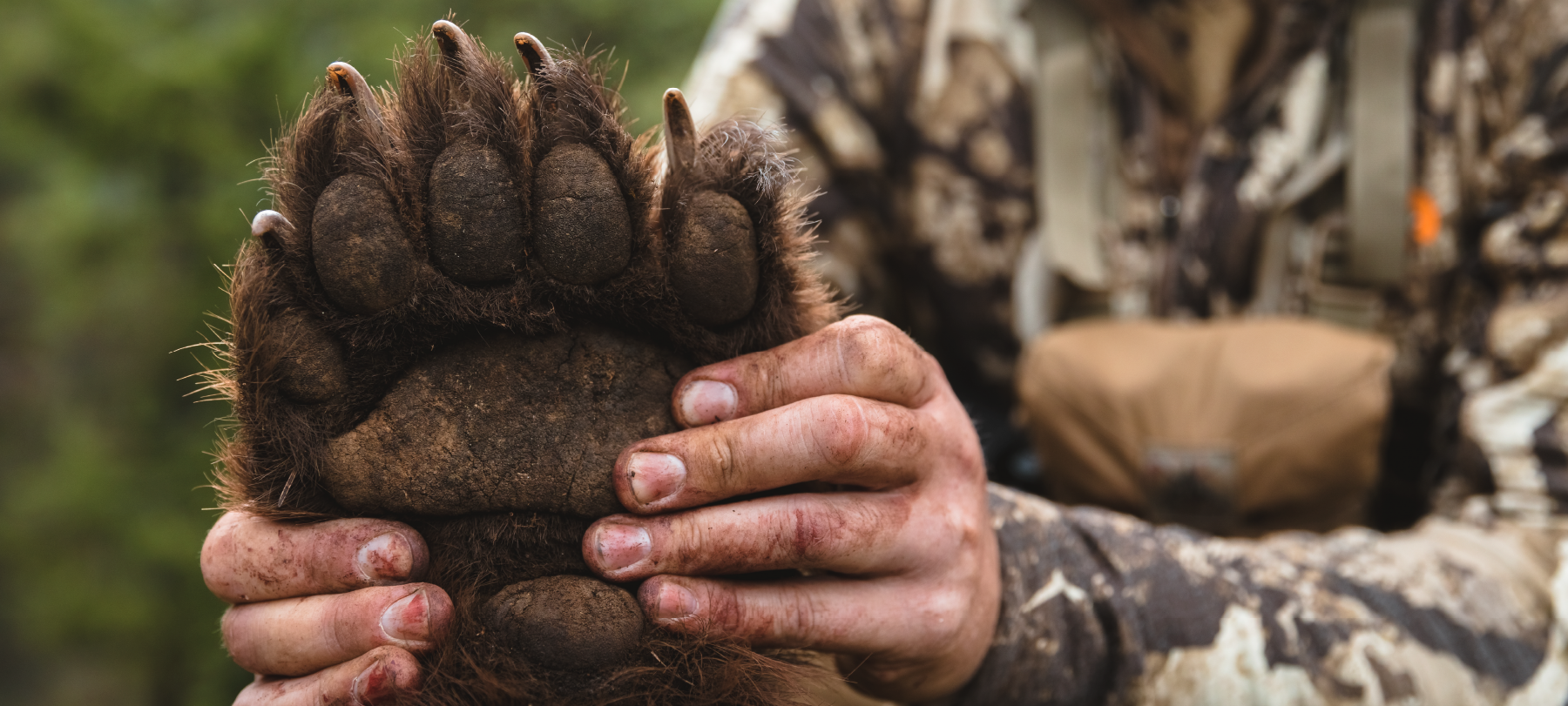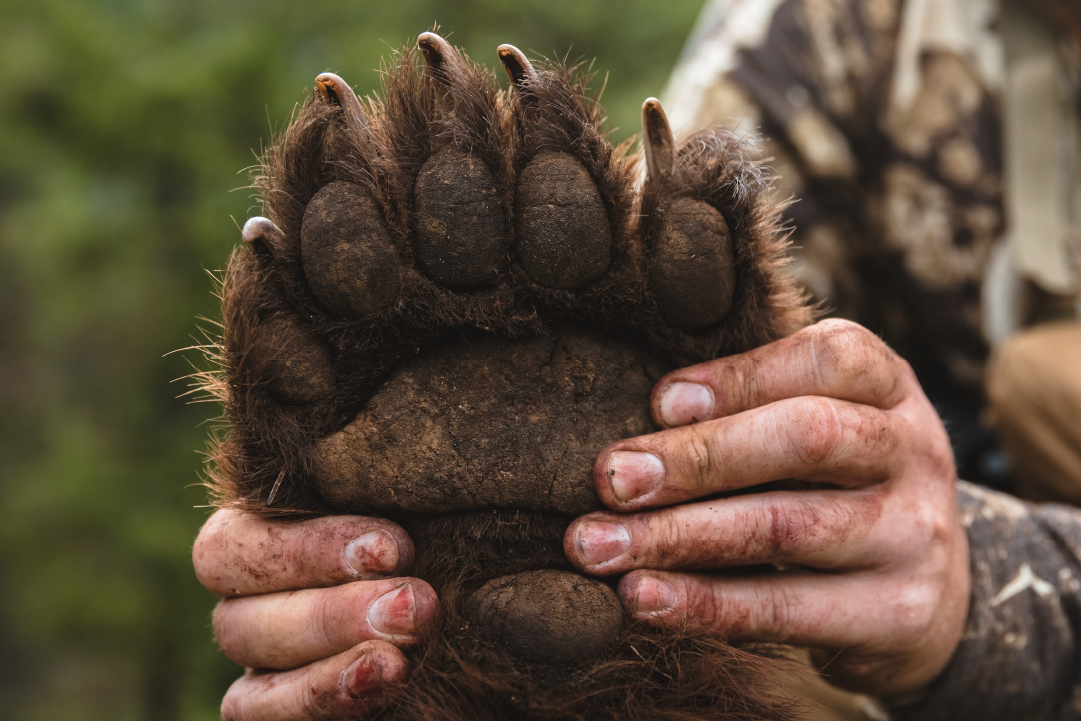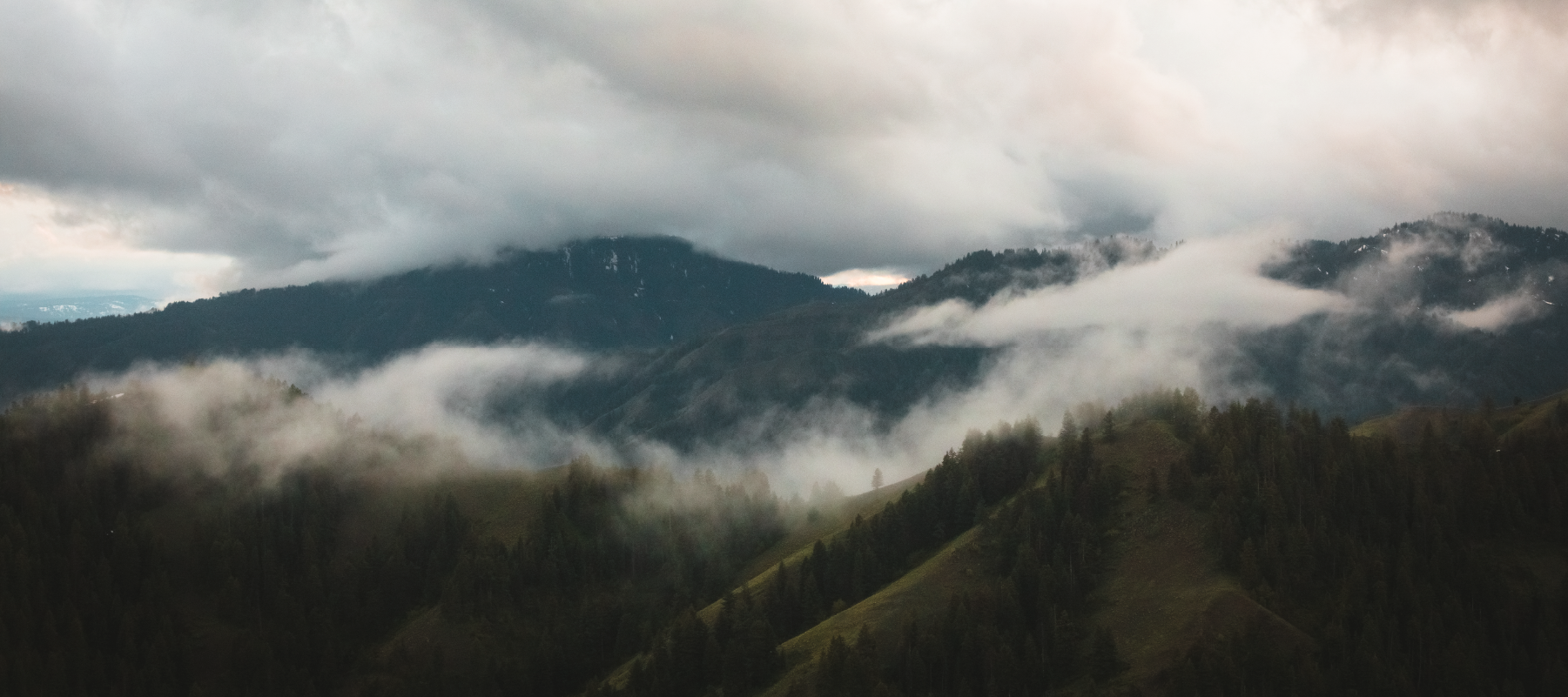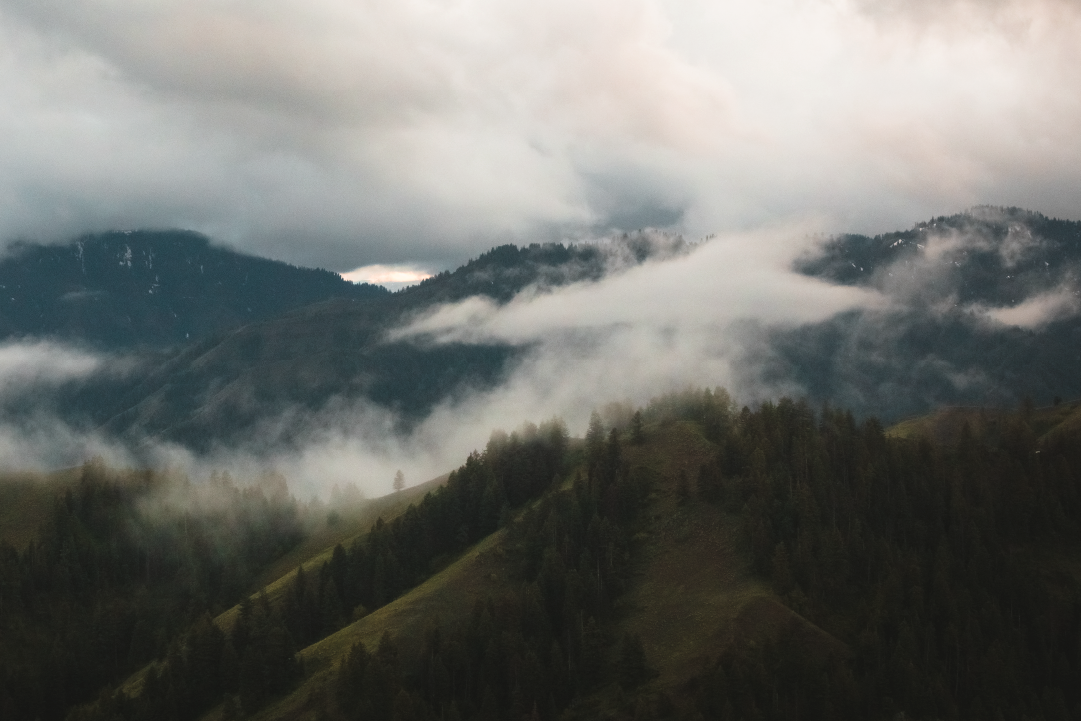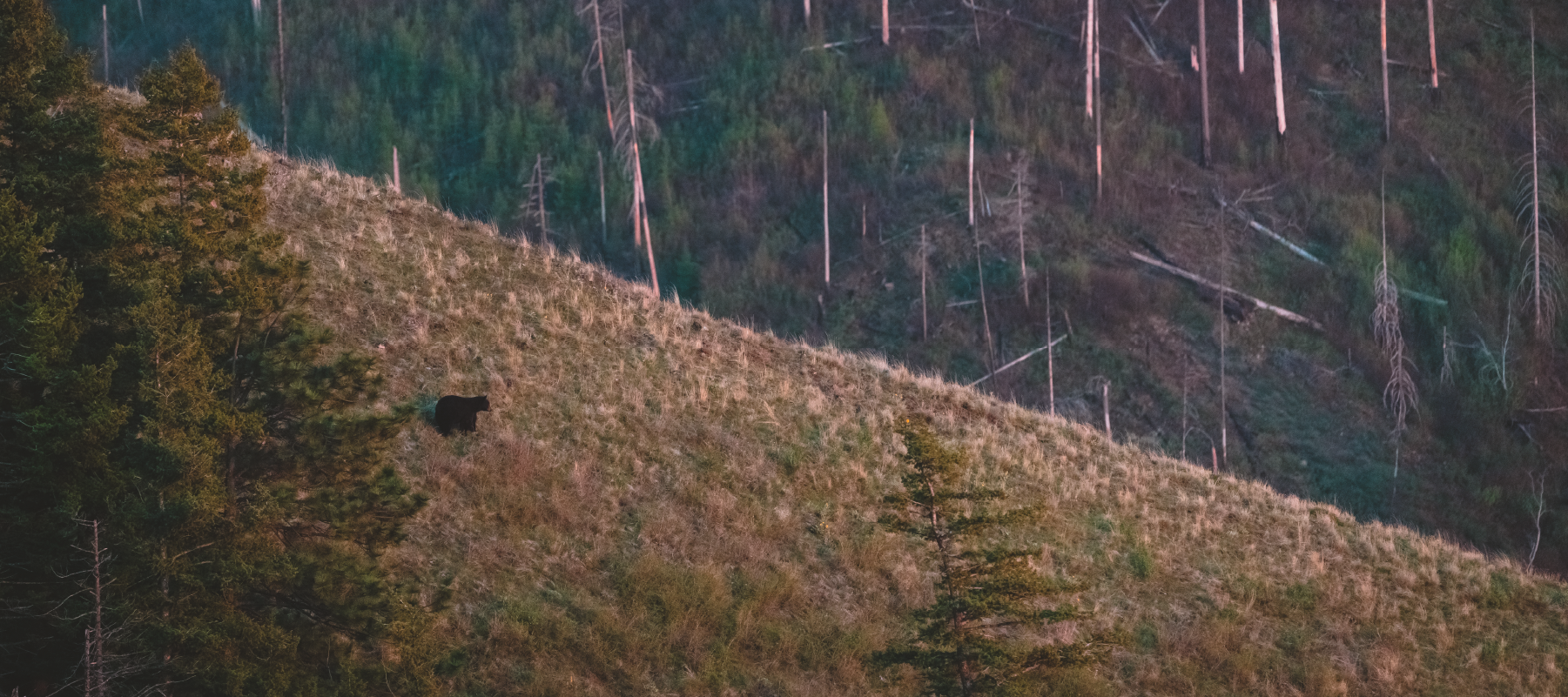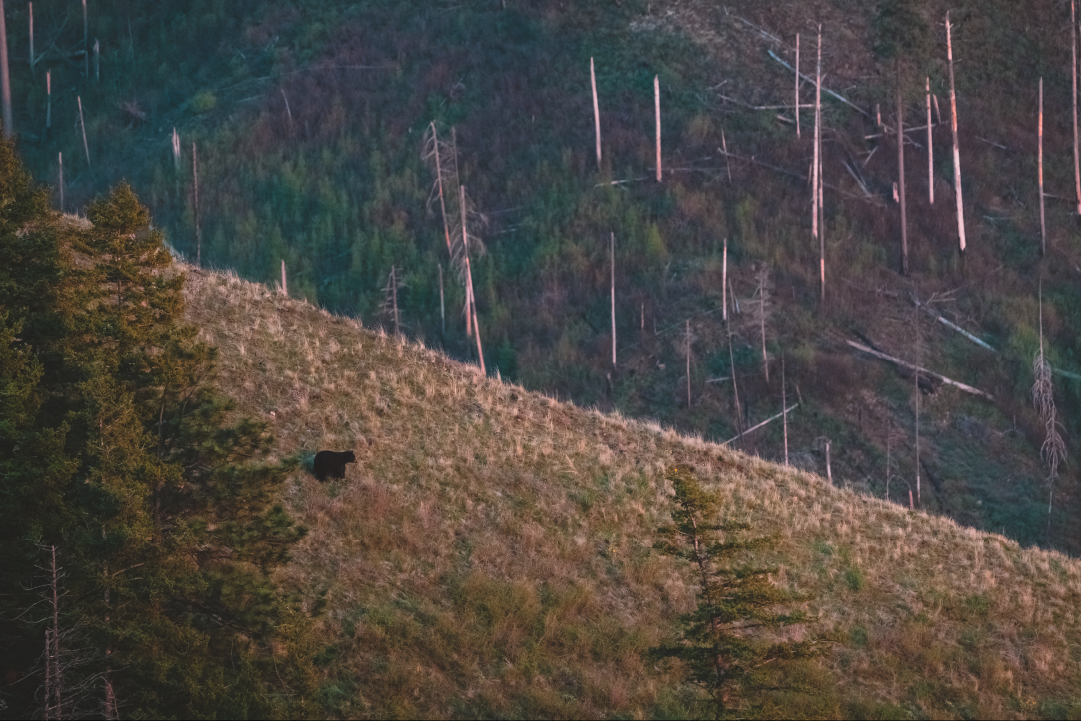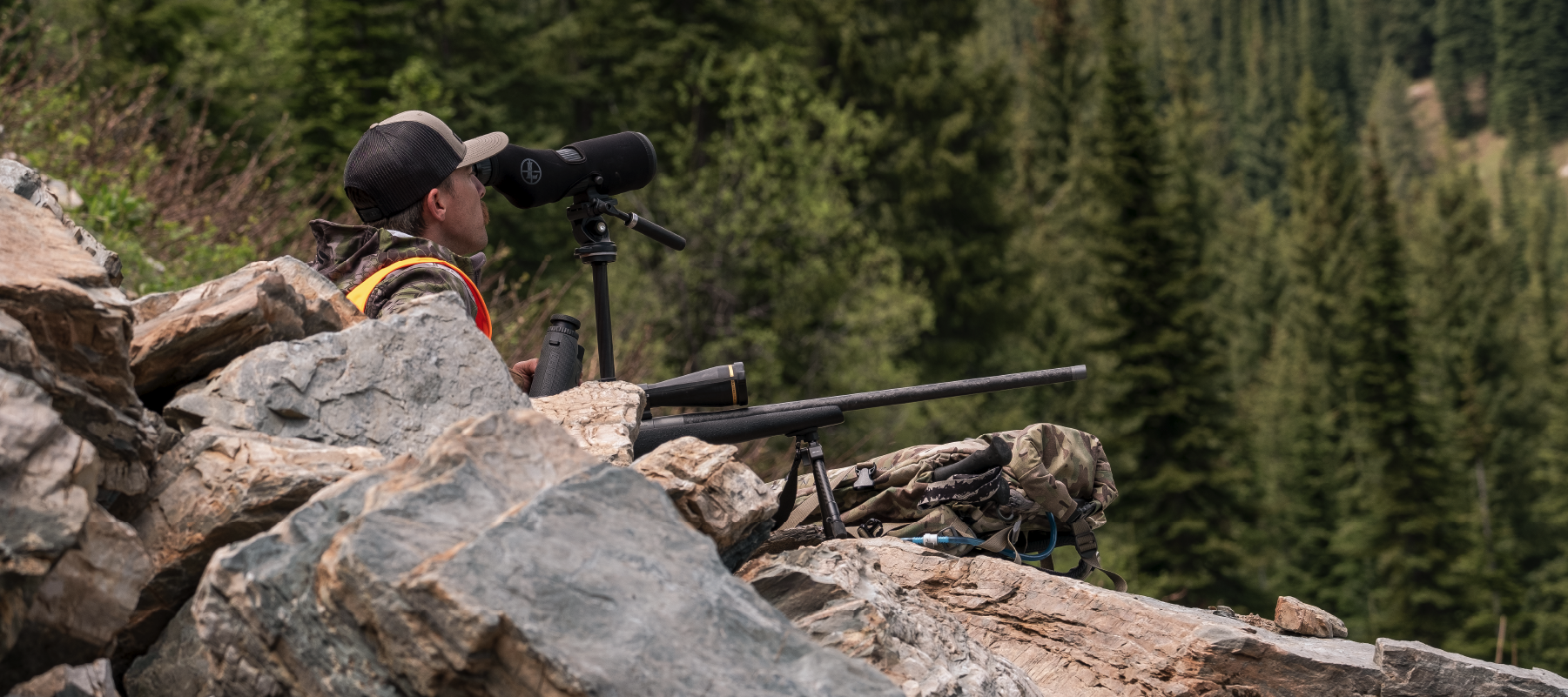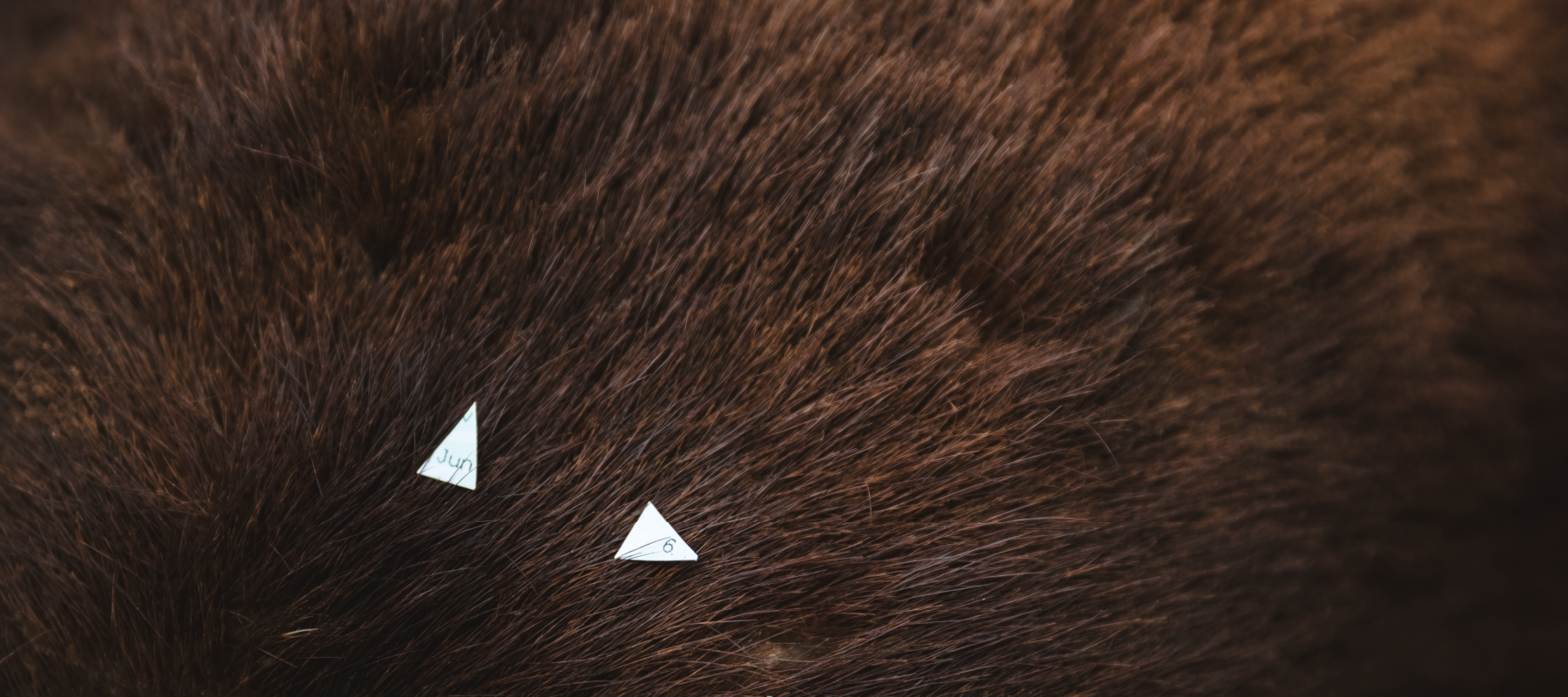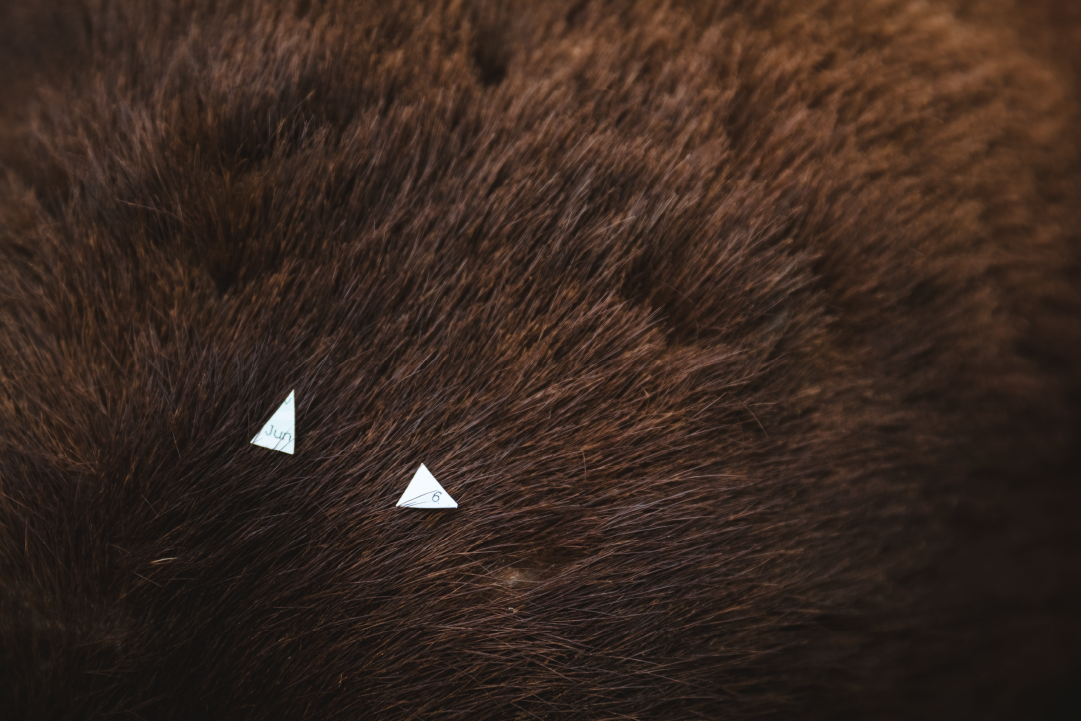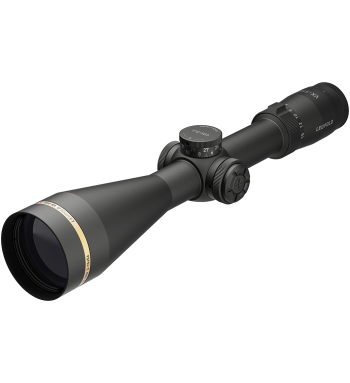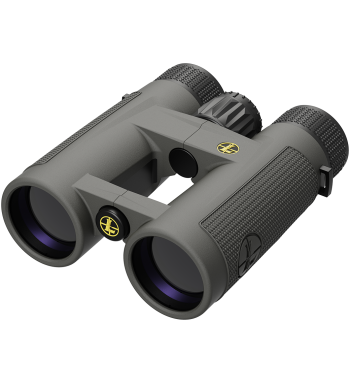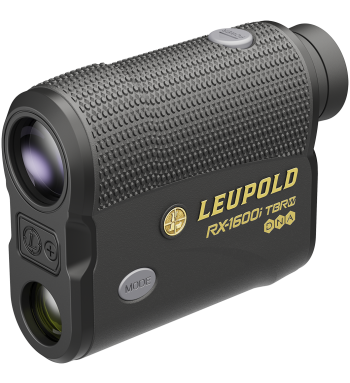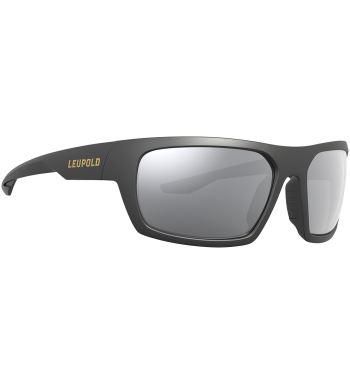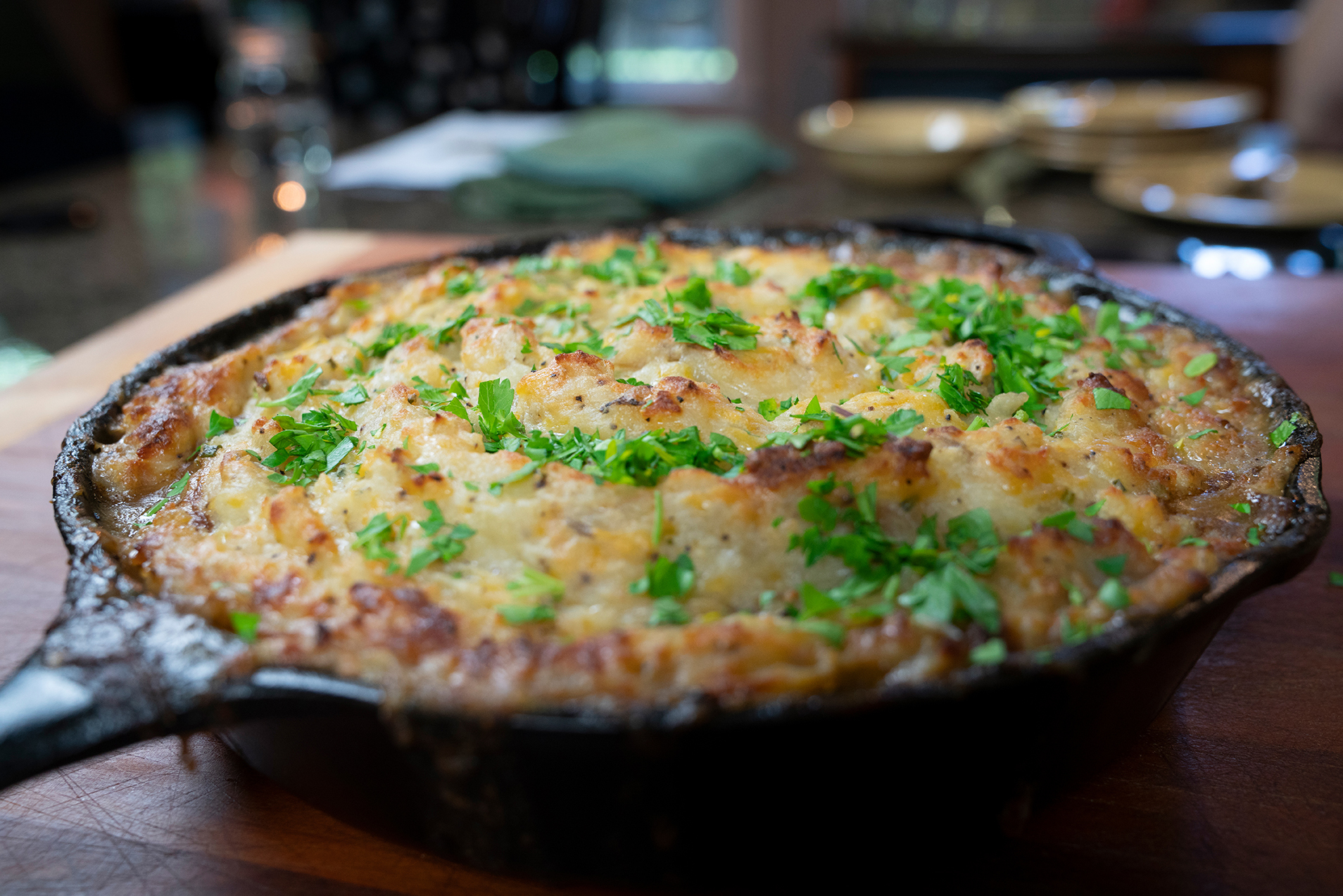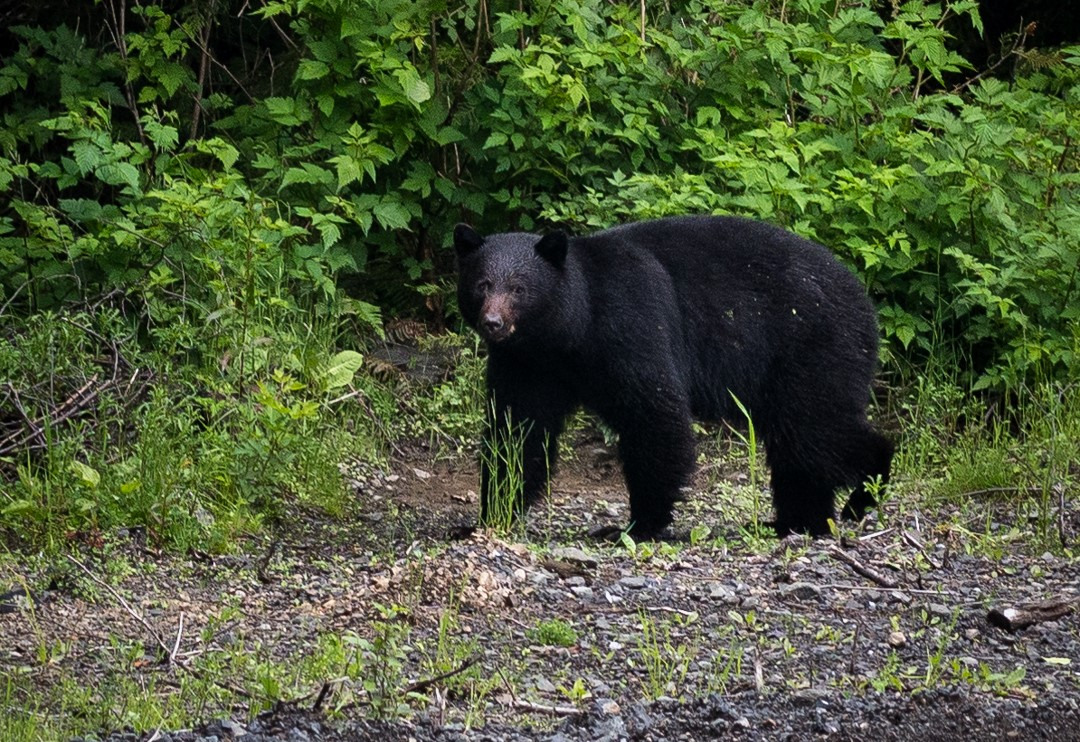Like many other game animals, bears will feed during the early morning and late evening hours. With that said, don’t quit come lunchtime. If you have an open day to hunt, regardless of the time or weather, go sit and glass your favorite spots and you just might spot a bear grazing across a hillside or sunning itself on a nice day. But when it comes to glassing, I can’t emphasize enough the importance of watching clearcuts.
With the tree canopy gone, ground foliage in clearcuts has a better chance of growing into the early-season feed a bear will be searching for. Of course, bears will sometimes feed in the timber, but the canopy of mature trees prevents sunlight from reaching the ground. Open spaces without tree cover get more light which leads to more green grass. And more green grass usually means more bears.



